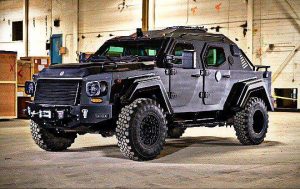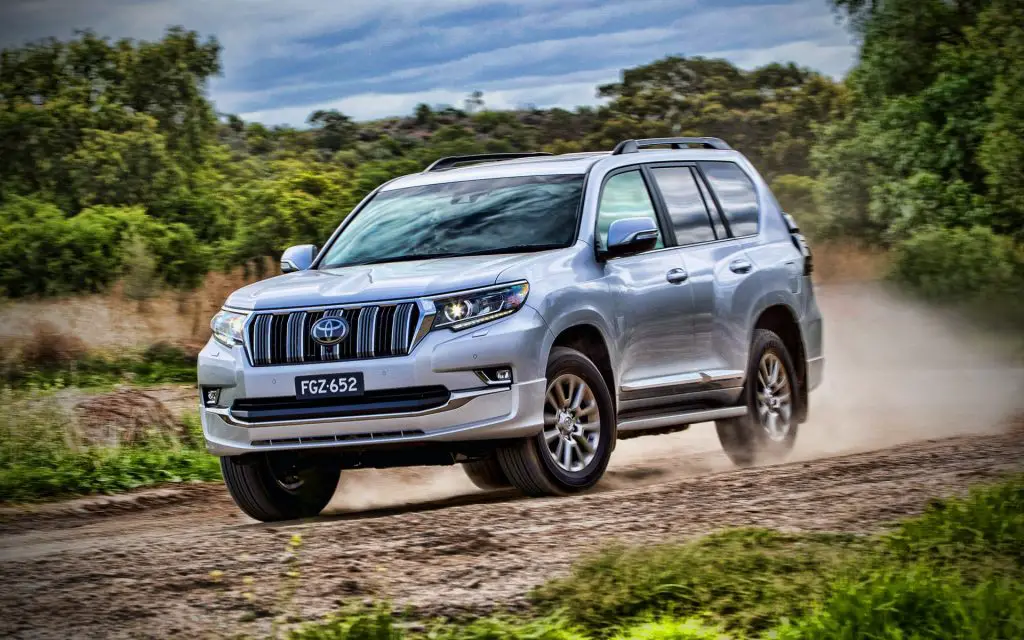Bugging out is one of the greatest strategies for survival in a situation where you face a disaster, turmoil, or, generally, a life-changing event. When this happens, you just have to be prepared for the worst-case scenario. You will need to work out a bug plan ranging from identifying the potential disaster to a bug-out car to get you to your bug-out location.
The vehicle you own might just be your bug-out vehicle. You might decide to buy a car based on your bug-out needs. If you cannot afford such luxury, a simple upgrade to your car will benefit your needs.
For instance, an all-wheel vehicle may be a simple upgrade over a front-wheel-drive car.
Read through this guide to know more about how you can bug out a car plus the necessary kit required to make your truck a fully functional bug-out vehicle.
Want to know more about survival skills? CLICK HERE.
How to Bug Out Car?
Choosing a Car
Before you can start to bug out a vehicle, you need to choose a car in the first place. This is a crucial step to take if you want to survive any “SHTF” scenario. When you are thinking of choosing a car, you have to think of so many factors. These factors include:
- Durability
- Fuel mileage and efficiency
- Off-road capability
The most suitable bug-out vehicle is the truck or a car. Everyone cannot afford the luxury to get a new car. This is why most people use any car they have in their garage.
Car Size
But when choosing a car, you should avoid using big vehicles as they might be a disadvantage. This is because you might find it difficult to navigate corners properly on the evacuation routes in a mass evacuation. You might run into some other vehicles if care is not taken.
You should choose a smaller, maneuverable vehicle such as a medium-sized SUV or truck that can easily get you out in case of a tight traffic situation. Depending on your budget and needs, you could choose other vehicles provided, they meet the criteria listed above.
The commonly used automobiles include campers, ATVs, boats, bicycles, motorbikes, and even your feet
Know the Range of Travel
Now that you have chosen a vehicle, preferably an SUV or truck, you need to know your vehicle’s travel range. Generally, the range of travel should correspond to your expected bug-out location.
Assuming your bug-out location is about 125 miles away and your vehicle only has 25mpg. You will need extra gallons of fuel to reach your destination. When you are bugging out your vehicle, you should make it a rule that your fuel tank must not go below half full.
This is because when you get to your bug-out location, you will still be left with enough fuel to get you back home whenever the crisis resolve
Trial Pack Your Vehicle
Next is to have a list of items that will fit into your vehicle. This is why you need to trial pack your vehicle. As you are doing this, you will get to realize some problems that will need immediate fixing.
Assuming there is a problem, you could just readjust your list of items or upgrade your vehicle by adding a roof carrier. Also, doing a trial pack for your vehicle will allow you to know the best place to place your items within your vehicle.
For example, items that need to be at the stretch of your arms and those that need to be at the trunk.
Know Your Vehicle Capacity
This goes without saying that “Your vehicle determines capacity.” When you are bugging out your vehicle, it is important to know that your vehicle can carry a certain weight. If you upgrade your vehicle, such as adding a roof carrier, adding racks of light, and so on, you need to consider the weight.
It can also be quite easy to overload your vehicle depending on the vehicle’s size and type. Most people fill up the spaces before reaching their weight-carrying limits. So, take note!
Following all these steps will ensure you bug out your vehicle successfully.
What Kit for Bugging Out with Your Vehicle?
As mentioned earlier, when trial packing your vehicles, we mentioned that you will need a list of items that go into your vehicle. These are basically the kits that make your bug-out vehicle fully functional.
Bug Out Kit
Your bug-out kit is strictly meant for your bug-out vehicle. This kit should contain all the things that can get you through about 72 hours of independent survival while going to your bug-out location. It should be self-contained and self-sufficient.
To have a complete bug-out kit, you should create a checklist about all the things you will need to update and renew the items before the journey begins. Renewing the items in your bug-out kit should be done regularly to avoid difficulties when you get to your bug-out location.
Here are the things to consider in your bug-out kit with your vehicle
Food
Generally, your bug-out kit should have at least three days’ supplies of food. The food should be in-transit food and onsite food. Intransit foods are foods that do not require cooking. You could take this food while on the way to your bug-out location.
For instance, peanut butter and jelly sandwiches, non-perishable foods, dehydrated foods, MREs, and so on. Onsite food, however, will be needed when you get to your bug-out location. Onsite food packed should depend on the time you will be spending there, storage capability, and so on.
Water
You should get 1 gallon of water per person per day. Utilize the in-transit and onsite approach discussed above too
Sanitation
Most toilet facilities might be unavailable when going to your bug-out location. You can just stop on the road and ease yourself by taking appropriate precautions by the side of the road. Regarding excrement, you could use WAG as another option for pooping by the side of the road.
Therefore, pack your toilet papers and hand sanitizers. Other things include baby wipes, diapers, pads, soaps, insect repellant, and so on
Shelter
This is important when you get to your bug-out location. You should pack your sleeping bag, tent, rain gear, blankets, matches, and appropriate clothes depending on the time of the year
Communication
Your vehicle should be equipped with an FM radio or satellite radio to get information. You also have to keep in touch with your loved ones. Therefore, your bug-out kit should have extra phones, walkie-talkies, flare
Navigation
Remember that during unrest in a region, places that you know before might seem different. Pack your GPS, maps, and compass
First Aid
In a time of unrest, adequate medication is vital in in-transit and onsite experiences. Having the right medication will remove anxiety and nervousness.
Protection
For your survival when you reach your bug-out location, protection is very crucial. Remember to pack your every day carries materials such as flashlights, utility knives, weapons, e.g., Pepper spray, and binoculars.
Money
You need cash!
Vehicle Emergency Kit
This should contain all the things needed by your bug-out vehicle if it breaks down. You don’t want to be left stranded on the highway. This also means you have to have some knowledge and skills in regards to this.
You don’t have to be a mechanic before knowing this. This should include
- Spare keys
- Spare parts like extra tires and plugs
- Tire repair kit
- Jack
- Tow cables and straps
- Duct tape
- Fire extinguisher
- Extra fluid
- Emergency warning triangles
- Air compressor
- Siphon and pump
- Seatbelt cutter
- Jumpstarter
- A car tool kit
- Folding shovel
Important Documents
When you are going to your bug-out location, you still need to be law-abiding despite the lawless scenario of unrest. Always have your license, car registration, vehicle manual, and contact lists in the glove compartment of your vehicle.
Check out
| How to Survive and Escape a Riot Without a Scratch? |
| What is Doomsday Preps for “Sheltering in Place”? |
| Recipe: How to Dry and Smoke Meat in the Wild: 4 Primitive Preservation Methods |
Attachments to Your Bug-Out Vehicle
Once the basic stuff has been done, you need to make your bug-out car fierce-looking, enhanced with a lot of functionality, and ultimately get you to your bug-out location. Here will show you all the accessories you will need to upgrade your vehicle.
- Roof rack
- Upgraded extra tires
- Light rack
- Window security film
- Night vision
- Snow chains
- Grill guard
- Extra gas tanks
There are other important considerations and tips for effectively preparing a bug-out vehicle:
Vehicle Maintenance and Reliability:
Regular maintenance checks are vital. Ensure that your vehicle is always in good working condition. This includes checking the engine, brakes, tires, lights, and fluid levels.
Reliability is key. Choose a vehicle known for its reliability and durability under various conditions.
Customization for Specific Scenarios:
Depending on your location and the types of disasters you are preparing for, your vehicle may require specific customizations. For instance, vehicles in snowy regions might need snow tires and chains, while those in arid areas might benefit from enhanced cooling systems.
Storage Solutions and Organization:
Efficient storage solutions like modular storage systems, seat-back organizers, and under-seat storage can maximize space and keep essential items accessible.
Proper organization within your vehicle can save time in critical situations. Items should be packed methodically with the most essential and frequently used items within easy reach.
Alternative Power Sources:
Consider adding alternative power sources like solar panels or a dual battery system to your vehicle. This can be crucial for powering devices when the engine is off.
Security and Stealth:
In some scenarios, it’s important to keep a low profile to avoid drawing attention. This might mean choosing a vehicle with a less conspicuous appearance or modifying your vehicle to appear ordinary.
Security features like improved locks, alarm systems, or even discreet armoring can be considered based on the level of threat you anticipate.
Training and Skills Development:
Having the right vehicle and gear is just one part of the equation. It’s equally important to develop the skills to use them effectively. This includes driving skills, particularly in off-road or challenging conditions, basic mechanic skills for vehicle repairs, and navigation skills.
Mental and Physical Preparedness:
The stress and physical demands of a bug-out scenario require mental toughness and physical fitness. Regular exercise, mental health practices, and stress management techniques can be beneficial.
Community and Networking:
Building a network of like-minded individuals can provide additional resources and support. Sharing knowledge and skills within a community can be invaluable in preparation and survival scenarios.
Legal Considerations and Compliance:
Ensure that all modifications and preparations comply with local laws and regulations. This includes vehicle modifications, carrying certain types of equipment, and adherence to traffic laws.
Sustainable Practices:
Consider the environmental impact of your preparations. Practices like minimizing waste, using sustainable materials, and planning for long-term resource management can be important, especially in prolonged scenarios.
Conclusion
Finally, you must have everything bugged out. Even your plans must be a bug out by always having a backup plan. You can always reach your bug-out location safely once you have your bug-out car already prepared.
We recommend that you read this guide thoroughly and if you feel like we have missed something, do well to let us know. Bug out safely!
Check out our website for more content like this.



